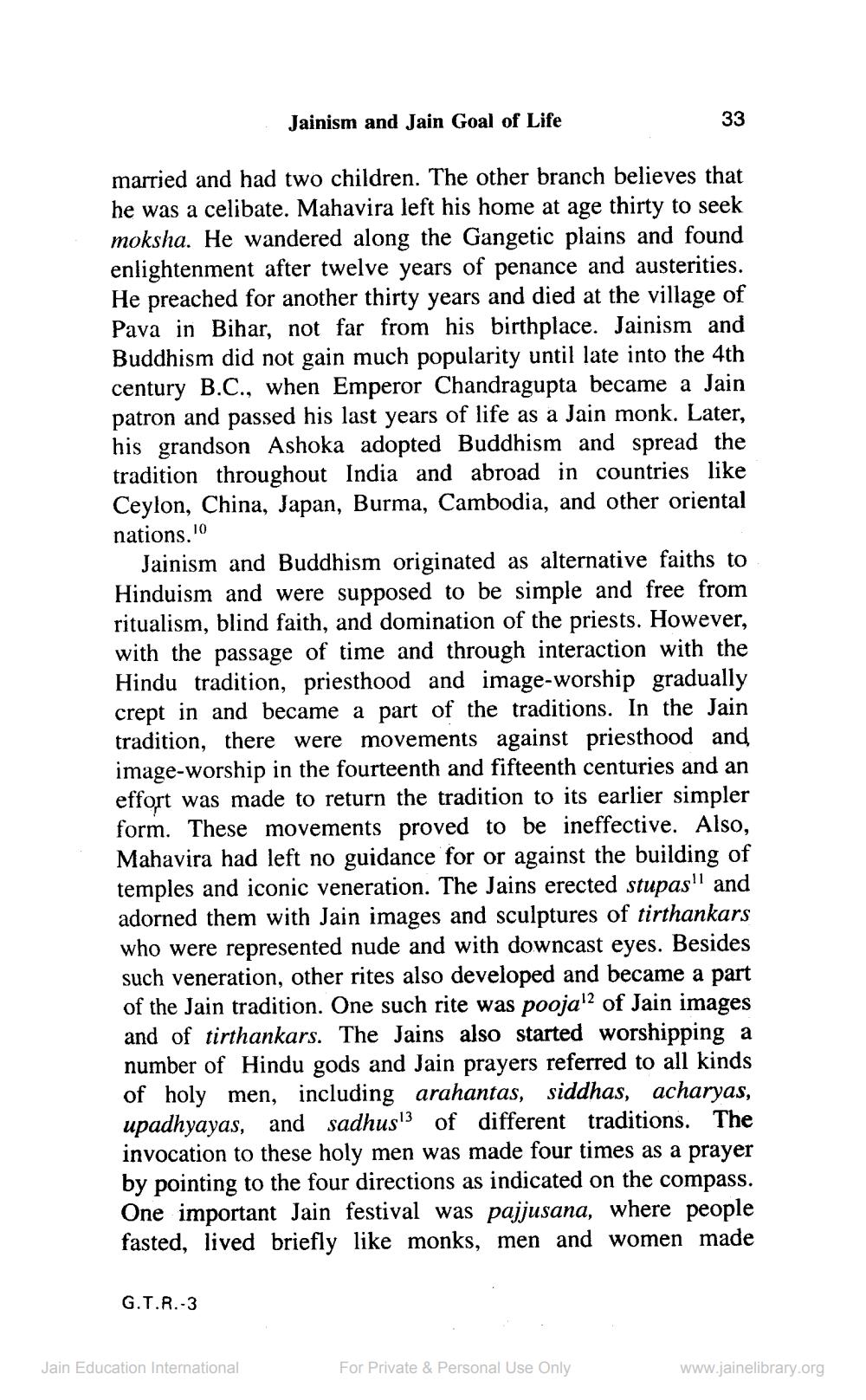________________
Jainism and Jain Goal of Life
33
married and had two children. The other branch believes that he was a celibate. Mahavira left his home at age thirty to seek moksha. He wandered along the Gangetic plains and found enlightenment after twelve years of penance and austerities. He preached for another thirty years and died at the village of Pava in Bihar, not far from his birthplace. Jainism and Buddhism did not gain much popularity until late into the 4th century B.C., when Emperor Chandragupta became a Jain patron and passed his last years of life as a Jain monk. Later, his grandson Ashoka adopted Buddhism and spread the tradition throughout India and abroad in countries like Ceylon, China, Japan, Burma, Cambodia, and other oriental nations. 10
Jainism and Buddhism originated as alternative faiths to Hinduism and were supposed to be simple and free from ritualism, blind faith, and domination of the priests. However, with the passage of time and through interaction with the Hindu tradition, priesthood and image-worship gradually crept in and became a part of the traditions. In the Jain tradition, there were movements against priesthood and image-worship in the fourteenth and fifteenth centuries and an effort was made to return the tradition to its earlier simpler form. These movements proved to be ineffective. Also, Mahavira had left no guidance for or against the building of temples and iconic veneration. The Jains erected stupas and adorned them with Jain images and sculptures of tirthankars who were represented nude and with downcast eyes. Besides such veneration, other rites also developed and became a part of the Jain tradition. One such rite was poojal2 of Jain images and of tirthankars. The Jains also started worshipping a number of Hindu gods and Jain prayers referred to all kinds of holy men, including arahantas, siddhas, acharyas, upadhyayas, and sadhus13 of different traditions. The invocation to these holy men was made four times as a prayer by pointing to the four directions as indicated on the compass. One important Jain festival was pajjusana, where people fasted, lived briefly like monks, men and women made
G.T.R.-3
Jain Education International
For Private & Personal Use Only
www.jainelibrary.org




